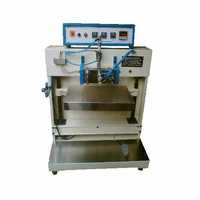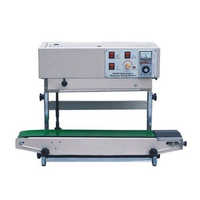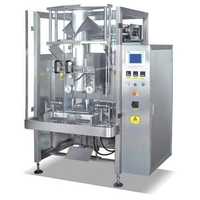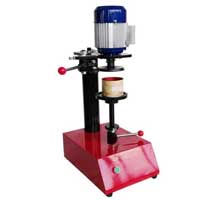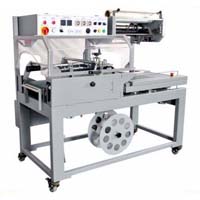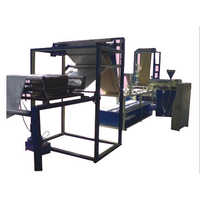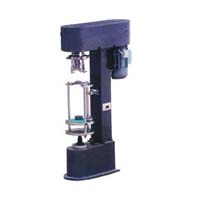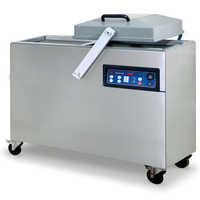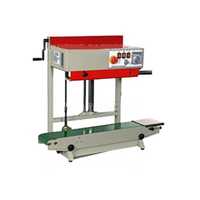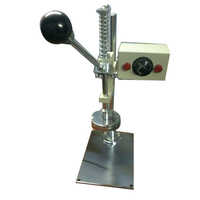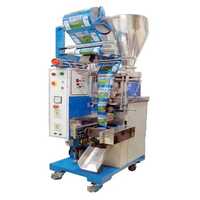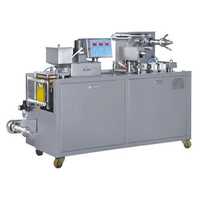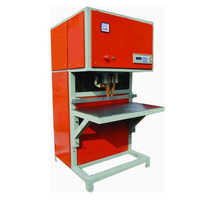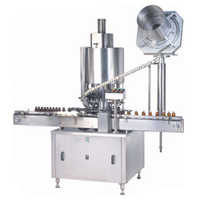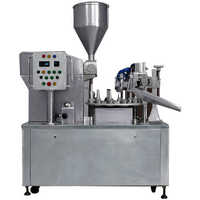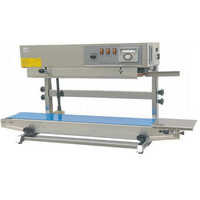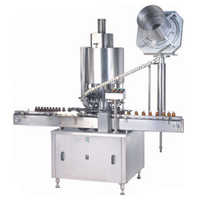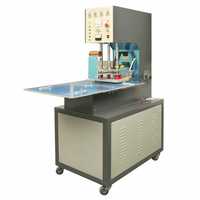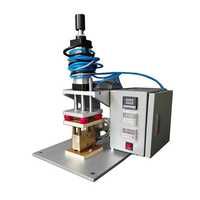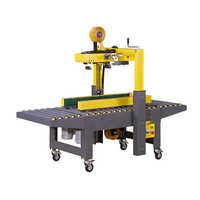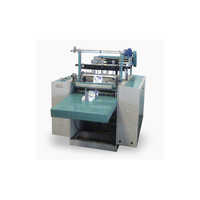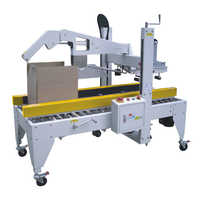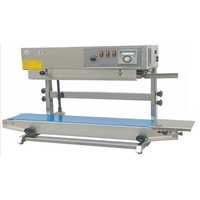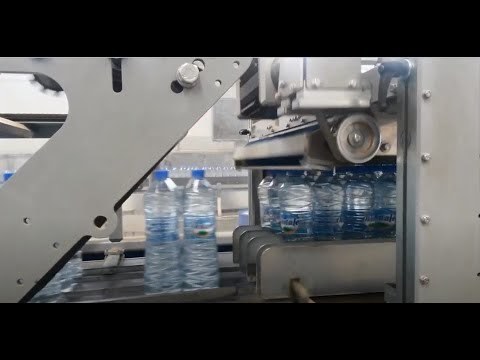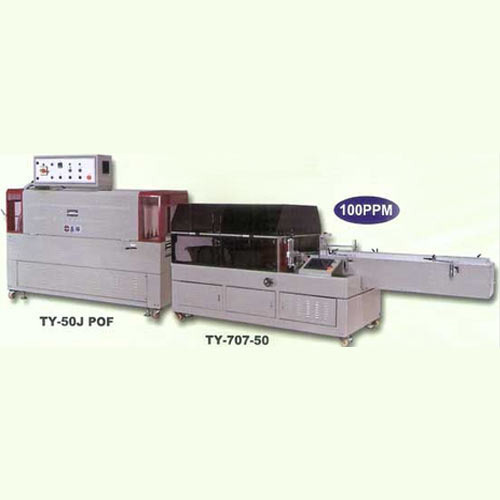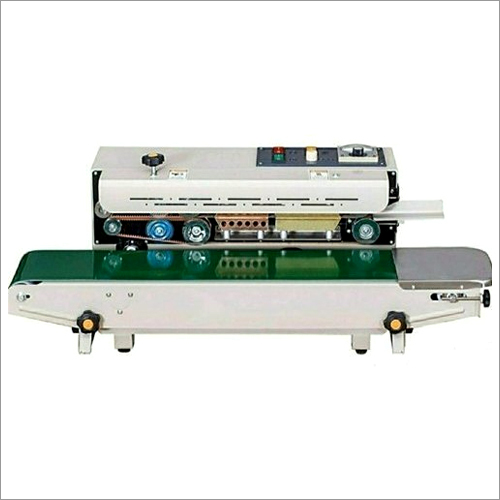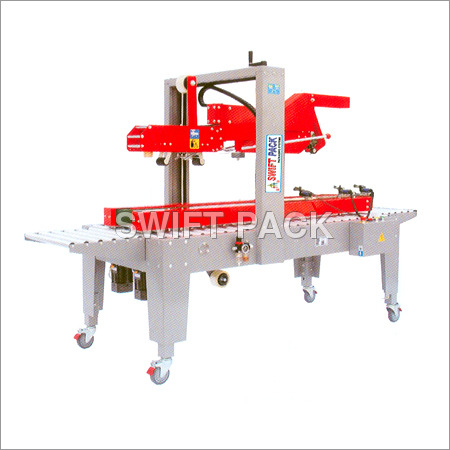Sealing Machine
(4209 products)
Sealing Machines offer efficient and durable solutions for packaging needs. These machines utilize electric drive systems and human-machine interfaces for precise control. Their semi-automatic operation ensures user-friendly operation. Features like high efficiency, low power consumption, and durability make them suitable for various industries. Whether it's continuous band sealing for high-volume packaging or L-sealers for smaller applications, Sealing Machines provide reliable and effective solutions.
...show moreThere are many different types of sealing machines, each with its own unique set of features and benefits. Some of the most common types of sealing machines include band sealers, impulse sealers, vacuum sealers, and shrink wrappers.
There are many benefits to using a sealing machine, including: - Increased product shelf life - Protection from moisture, air, and other contaminants - Improved product appearance - Reduced shipping costs - Increased customer satisfaction
When choosing a sealing machine, there are a few factors to consider, including: - The type of product you are sealing - The size of the product you are sealing - The speed at which you need to seal the product - The budget you have for a sealing machine
The specific instructions for using a sealing machine will vary depending on the type of machine you have. However, some general tips for using a sealing machine include: - Make sure the sealing machine is clean and free of debris. - Place the product you are sealing in the sealing area. - Close the sealing area and apply pressure to the sealing bar. - Hold the pressure for the recommended amount of time. - Release the pressure and remove the sealed product.
Here are a few tips for getting the most out of your sealing machine: - Use the correct type of sealing machine for your needs. - Use the correct settings for the type of product you are sealing. - Keep the sealing machine clean and free of debris. - Inspect the sealing machine regularly for any damage. - Follow the manufacturer's instructions for use and maintenance.
Explore More Categories
Product Showcase
Made in India
Automatic High Speed Side Sealer And Shrink Tunnel - Color: Grey
Price: 2250000 INR (Approx.)/Unit
MOQ - 1 Unit/Units
Type - Side Sealer & Shrink Tunnel
Color - Grey ,Black and Mix
Driven Type - Automatic
17 Years
Business Type: Manufacturer | Supplier
JOIN PACK MACHINES (PVT.) LTD.
Indian Inquiries Only
Semi Automatic Continuous Band Sealer Machine
Price Trend: 70000.00 - 120000.00 INR (Approx.)/Unit
MOQ - 1 Unit/Units
Automation Grade - Automatic
Condition - New
3 Years
Business Type: Manufacturer
AUTO POWER PACK
Carton Sealer with Auto Flap Closure
Price Trend: 250000.00 - 700000.00 INR (Approx.)/Piece
MOQ - 1 Piece/Pieces
Type - Auxiliary Packaging Machine
Power - 200 Watt (w)
Voltage - 220 Volt (v)
19 Years
Response Rate: 95.56%
Business Type: Manufacturer | Service Provider
SHRI VINAYAK PACKAGING MACHINE PVT. LTD.
Indian Inquiries Only
Made in India
Automatic Band Sealing Machine
Price: 35000 INR (Approx.)/Piece
MOQ - 2-5 Piece/Pieces
Type - Sealing Machines
Material - Stainless Steel
Auxiliary Packaging Machine Type - Other
4 Years
Business Type: Manufacturer | Supplier
TIRUMALA ENGINEERING INDUSTRIES
Indian Inquiries Only
Made in India
Automatic High Speed Side Sealer Application: Pouch Sealing
Price Trend: 2000000.00 - 1500000.00 INR (Approx.)/Piece
MOQ - 1 Piece/Pieces
Condition - New
Application - Pouch Sealing
Type - Sealing Machine
3 Years
Business Type: Manufacturer | Distributor
DND MACHINERY PRIVATE LIMITED
Induction Sealing Machine
Price Trend: 15000.00 - 90000.00 INR (Approx.)/
MOQ - 1
7 Years
Business Type: Manufacturer
SHRI VINAYAK PACKAGING MACHINE PRIVATE LIMITED
Indian Inquiries Only
Made in India
Yes Jet-Fol-01 Automatic Foil Sealing Machine
Price: 750000 INR (Approx.)/Unit
MOQ - 1 Unit/Units
Condition - New
Color - Silver
Automation Grade - Yes
7 Years
Business Type: Manufacturer | Exporter
JETPACK MACHINES PVT. LTD.
Made in India
Metal Wire Fuse For Packaging Machine
Price: 450000 INR (Approx.)/Piece
MOQ - 1 Piece/Pieces
Accuracy - 100 %
Production Capacity - 300 Kg/hr
Dimension (L*W*H) - 580 *680*900 Centimeter (cm)
9 Years
Response Rate: 70.42%
Business Type: Manufacturer | Distributor
SMART PACKAGING SYSTEM
Indian Inquiries Only
Made in India
L-Sealer and Tunnel Machine
Price Trend: 3000.00 - 7000.00 INR (Approx.)/Unit
MOQ - 1 Unit/Units
Automation Grade - Automatic
Voltage - 220 Volt (v)
19 Years
Business Type: Manufacturer
JOY PACK INDIA PVT LTD
Indian Inquiries Only
Made in India
4 Head Chips Pouch Packaging Machine Application: All Types Namkeen
Price: 650000 INR (Approx.)/Piece
MOQ - 1 Piece/Pieces
Filling Capacity - 18 gm to1 kg Kg/day
Type - Pneumatic
Application - All Types Namkeen ,Dry Fruits, Chips Packaging
11 Years
Business Type: Manufacturer | Supplier
AVM PACKAGING SYSTEMS
Made in India
Automatic Loop Handle Sealing Machine
Price Trend: 350000.00 - 500000.00 INR (Approx.)/Set
MOQ - 1 Set/Sets
11 Years
Business Type: Manufacturer | Distributor
VELOPLAST PRIVATE LIMITED
Made in India
Automatic Blister Packing Machine
Price Trend: 90000.00 - 180000.00 INR (Approx.)/Unit
MOQ - 1 Unit/Units
Driven Type - Electric
Power - 1.5 Watt (w)
Automation Grade - Automatic
4 Years
Business Type: Manufacturer | Supplier
SHRI VINAYAK PACKAGING MACHINE PVT. LTD.
Indian Inquiries Only
Made in India
Case Erector Machine Dimension(L*W*H): Min: 200X150X120
Price: 975000.00 INR (Approx.)/Unit
MOQ - 1 Unit/Units
Type - Case Erector Machine
Dimension (L*W*H) - Min: 200X150X120, Min: 200X480X480 Millimeter (mm)
5 Years
Response Rate: 99.1%
Business Type: Manufacturer | Distributor
MANILAL PACKPLAST LLP
Made in India
Cream Hualian Bsf-5640Lg Automatic L Sealer Machine With Shrink Tunnel
Price: 299000 INR (Approx.)/Piece
MOQ - 1 Piece/Pieces
Type - L sealing machine
Power - 1200 Watt (w)
Packaging Material - POF SHRINK FILM
6 Years
Response Rate: 87.65%
Business Type: Manufacturer | Distributor
SHRI RAM PACKAGING SYSTEM
Made in India
Automatic High Speed Side Sealer Application: Pouch Sealing
Price Trend: 2000000.00 - 1500000.00 INR (Approx.)/Piece
MOQ - 1 Piece/Pieces
Automation Grade - Fully Automatic
Driven Type - Electric
Type - Sealing Machine
3 Years
Business Type: Manufacturer
SHREEJI SHRINK SYSTEM
Made in India
L Type Sealing Machine
Price: 10000 INR (Approx.)/Piece
MOQ - 1 Piece/Pieces
13 Years
Business Type: Manufacturer | Exporter
Ramesh Engineering Works
Made in India
Bottle Sealing Machines 5, I Deal In: New Only
8 Years
Business Type: Manufacturer | Distributor
Excel Filtration Pvt. Ltd.
Made in India
Black 500Mm Injection Packers
Price: 148 INR (Approx.)/Piece
MOQ - 1 Piece/Pieces
Type - Injection Packers
Color - Black
Condition - New
16 Years
Business Type: Manufacturer | Trading Company
RIDDHI ENTERPRISE
Indian Inquiries Only
Box Taping Machine Accuracy: 100 %
Price: 375000 INR (Approx.)/Piece
MOQ - 1 Piece/Pieces
Automation Grade - Automatic
Power - 220 Volt (v)
Application - Automatic Taping Cartons
14 Years
Business Type: Manufacturer | Distributor
VIJAY ENTERPRISE
Made in India
Continuous Band Sealer Machine - Automatic Grade: Automatic
Price: 20000 INR (Approx.)/Piece
MOQ - 1 Piece/Pieces
Type - Other
Automatic Grade - Automatic
4 Years
Response Rate: 94.59%
Business Type: Manufacturer | Service Provider
SANSHA PACKAGING MACHINERY
Made in India
Bottle Sealing Machines Accuracy: 1 %
Price: 2150000 INR (Approx.)/Piece
MOQ - 1 Piece/Pieces
Accuracy - 1 %
Application - Bottle Sealing Machines
Color - Silver
2 Years
Business Type: Manufacturer | Exporter
Jacks Pharma Machinery
Made in India
Automatic Industrial Packing Machine
Price: 155000 INR (Approx.)/Unit
MOQ - 1 Unit/Units
Automation Grade - Automatic
Application - Industrial
Condition - New
2 Years
Business Type: Manufacturer | Distributor
AAREM ENGINEERING INDIA PRIVATE LIMITED
Gclc-60 Tube Filling And Sealing Machine - Automation Grade: Automatic
MOQ - 1 Unit/Units
Application - Tube Filling And Sealing
Color - Silver
Condition - New
2 Years
Business Type: Manufacturer | Distributor
Ruian Good Machinery Co. Ltd
Made in India
Commercial Bag Sealing Machine Accuracy: 100 %
Price: 28000.00 INR (Approx.)/Unit
MOQ - 1 Unit/Units
Sealing Type - Hot Bar
Weight - 50 Kilograms (kg)
Condition - New
13 Years
Response Rate: 74.36%
Business Type: Manufacturer | Supplier
PACK MAKER PACKAGING SOLUTION
Made in India
Automatic Sealing And Strapping Machine
MOQ - 1 Unit/Units
Type - Other
Material - Metal
Feature - Heavy Duty Machine, Highly Efficient
3 Years
Business Type: Manufacturer | Supplier
ULTRA WORLDWIDE PVT. LTD.
Verified Exporter
( Accepts only Foreign Inquiry)
Semi-Auto Tube Filling Sealing Machine - Application: Industrial
MOQ - 1 Unit/Units
Color - Silver
Condition - New
Application - Industrial
2 Years
Business Type: Manufacturer | Distributor
Qualipak Machinery Hi Tech Ltd.
Made in India
Flow Wrap Machine - Application: Industrial
Price: 500000 INR (Approx.)/Piece
MOQ - 1 Piece/Pieces
Driven Type - Electric
Application - Industrial
Automation Grade - Automatic
2 Years
Business Type: Manufacturer | Distributor
WSP CRANES & SERVICES
Made in India
Mild Steel Pouch Sealing Machine
Price: 18000 INR (Approx.)/Unit
MOQ - 1 Unit/Units
Usage - Industrial
Product Type - Sealing Machine
Material - Mild Steel
3 Years
Business Type: Supplier | Trading Company
Shree Raj International Private Limited
Sealing Machine Manufacturers | Suppliers in India
| Company Name | Location | Member Since |
|---|---|---|
| Shri Vinayak Packaging Machine Pvt. Ltd. | New Delhi, India | 19 Years |
| Joy Pack India Pvt Ltd | Delhi, India | 19 Years |
| Join Pack Machines (Pvt.) Ltd. | Delhi, India | 17 Years |
| Riddhi Enterprise | Mumbai, India | 16 Years |
| Vijay Enterprise | Kolkata, India | 14 Years |
| Ramesh Engineering Works | Mumbai, India | 13 Years |
| Pack Maker Packaging Solution | Rajkot, India | 13 Years |
| Avm Packaging Systems | Mumbai, India | 11 Years |
| Veloplast Private Limited | Delhi, India | 11 Years |
| Smart Packaging System | Indore, India | 9 Years |
What Is a Sealing Process?
Introduction
Sealing is the process of binding two materials together at their surfaces using a substance that adheres to both of them (often a separate substance) and transfers the forces between them. The sealing process is most sensitive to temperature. Is the sealant layer activated and the package oversealed at the heat-sealing temperatures you use?
The success of your product relies on your ability to seal it, keep it sanitary, and pass inspection every time. In order to seal well, one must be aware of and able to manipulate several sealing variables.
How Does a Sealing Machine Works.
One variety of sealers is the heat sealing machine, which employs thermal energy to secure packages. The heating ribbon on the device's outside is activated by an impulse of high current. An intense heat wave is generated, melting and sealing the bag or sheet sandwiched between the sealing bars. Any two materials with a thermoplastic layer can be joined or sealed with a heat sealer, not just those with the same composition.
When the sealing bar reaches the proper temperature, the material melts, and bonds together like the liners in a zip-top bag. This is a common method for preserving food and other items by sealing bags or even plastic coating them.
Because of their wide range of applications, heat sealers come in a wide range of sizes and configurations. They find widespread application in the food packaging, manufacturing, construction, and healthcare sectors. Even liquids contained in a plastic bag can be sealed off with ease using this method.
What Are the Types of Sealing Machine.
1. Vertical Continuous Band Sealer
Any material that can be sealed with heat can be sealed using a Vertical Continuous Band Sealer. Along with inflating the bag with gas, the Vertical Continuous Band Sealer also uses a solid-ink coding equipment to print a colorful label on the bag before sealing it.
2. Horizontal Continuous Band Sealer
Any material that can be sealed with heat can be sealed using a Horizontal Continuous Band Sealer. Horizontal Continuous Band Sealer uses a solid-ink coding device to print the colored label on bag at the same time it seals, in addition to its gas filling function.
3. Air Flushing Continuous Band Sealer
All materials that can be sealed with heat can be sealed using the Air Flushing Continuous band sealer.
The machine's print wheel is convertible between R and T typesetting formats. This Sealing Machine can print two or three lines of text in the R arrange format, using either a font size of two (18PT) or a font size of three (24PT). One can also equip a counting device if that proves to be essential.
4. Blister or Tray
There are many different types of blister sealers used to adhere thermoformed blisters to paperboard or film backings, from manual shuttle units that only process one package at a time, to automated rotary type machines like the one shown here, to fully automated machines with mechanical loading of cards, blisters, and products.
Seal machines, which also form the packages, a sealer just closes the blisters and backings that have already been made.
Again, medical and food tray sealers employ premade trays and can range from single-package, multi-tray machines, manually fed equipment to high-volume, lidstock, products, etc., and may feature vacuum or modified atmosphere capabilities.
5. Clamshell
Sealers for clamshell containers, which are used for prepackaged foods like sandwiches, salads, and hardware, are often handheld machines with tamper-resistant features. Often referred to as "point sealers," these devices employ heat, ultrasonic waves, or some combination thereof to create tiny melted tack welds in a variety of packaging materials. When complete perimeter sealing is not enough, clamshell containers can also be sealed on blister sealers.
6. Crimp/Jaw
Crimp sealers are machines that employ high temperatures and pressure to seal individual packets. They are adaptable to both portable and stationary use. In comparison to crimp sealers, jaw sealers are often larger, floor- or bench-mounted machines that are activated by a footswitch. When in automatic mode, operators can put packages directly into the seal bars without intervening.
7. Vacuum
As a result of the vacuum sealer's ability to keep foods fresh for longer by preventing oxygen from getting into the package, these tools are commonly employed for the packaging of food and meat. In order to remove any air from a package or tray before sealing the top layer or cover, many vacuum packing machines include a chamber.
Depending on the volume, they may be manual, semi-automatic, or fully-automatic devices. It is possible to create MA packages with several different types of vacuum equipment (MAPs).
8. L-Bar
When film is used in conjunction with a L Bar sealer, three sealed edges can be made from either doubled-over lengths of material or from separate top and bottom webs. The L bar sealer, with each cycle, produces a seal at both the end and the edge, giving the seal a "L" shape.
Each subsequent bag features a filling aperture at its open side and end, which is then sealed. The sealer typically has a device that cuts the packages apart once they have been sealed. They work well with heat tunnels and shrink wrap.
9. Impulse Sealer
Sealing all types of plastic films, compound films, and the aluminum-plastic film is just one of the many uses for hand impulse sealers with middle cutter.
10. Hot Bar Foot Sealer
Hot Bar Foot Sealers have numerous applications, including food, special local products, tea, pharmaceutical, hardware, and other manufacturing sectors.
11. Foot Sealer
A wide variety of industries, including those dealing with food, unique regional products, tea, medicine, hardware, etc., use foot sealers. They are the most practical and cost-effective sealers for stores, homes, and workplaces.
12. Case/Carton
Taping heads on case and carton sealers attach adhesive tape to the flaps of cardboard packaging. The boxes are moved under the tape applicator heads using conveyors. Machines that are able to tape the inside and outside of cases will often employ side belts.
13. Cap/Bottle
Handheld, semi-automatic, or fully-automatic inductive sealing equipment is typically used to secure the tamper-resistant closures beneath the caps of bottles. Before going through the sealer, the bottles are capped, and the tamper-evident closure is held in place by the cap while it seals around the bottleneck.
What Is the Use of Sealing Machine?
Counting and quality control are two of the primary uses for heat and impulse sealers in the many different sectors that employ them. Heat is the primary method used by sealers to adhere plastic film to itself or to other packaging materials like cardboard, trays, etc. In contrast to vacuum sealers, which are used to provide airtight containers for food and other perishables, ambient air sealers are used to package products that are unaffected by oxygen. Products like baked goods, almonds, and other snacks benefit from a modified atmosphere packaging (MAP) system.
The need for a certain packaging rate is usually the deciding factor when picking sealers. Low-volume applications benefit from the use of handheld sealers, whereas the high-volume industry is best served by fully automated devices. While most sealers are designed to work with premade pouches, clamshells, blisters, etc., the L-bar sealer is an anomaly since it forms its own bag from a single web of packing film or from upper and lower webs.
A jaw sealer is a good option for a low-volume user of premade pouches, whereas a band sealer is better for a high-volume user. There is a wide range of vacuum sealers available, from small, portable machines to large, industrial ones that can load trays and items automatically.
In addition to standard hand-held and bench-mounted hand-fed models, there are also shuttle, inline, rotary, and carousel sealers available. The pricing of packages can be affected by your selections here.
Instead of using heat, case and carton sealers adhere strips of tape to the tops and sometimes the bottoms of boxes, crates, and other packaging materials.
FAQs: Sealing Machine
Q. Which sealing machine is best?
Ans: JUNKYARD hand Heat sealing machine is the best for you. The machine's temperature is controlled via a knob on the side.
Q. Which motor is used for sealing machine?
Ans: 50wDC motor is used for sealing machine which is 230V, and 2000 RPM.
Q. What is an advantage of a sealing machine?
Ans: Here are the top advantages of a sealing machine:
- Increase level of production
- Impacts line Automation
- Reduces packaging costs
- Flexible
- Reduces chances of error
- Industrial use
- Improves Quality
Q. What is sealing machine used for?
Ans: OEM supply shipments of liquids, Consumer, bulk, powders, sprays and granules all require the usage of sealing machines.
Related Categories
Agarbatti Making Machines
Agricultural Machines & Tools
Bag Closing Machine
Bag Making Machine
Bag Packaging Machines
Banking Automation Products
Bending Machines
Billing Machine
Biscuit Making Machinery
Block Making Machine
Blow Moulding Machines
Box Making Machines
Braiding Machine
Brick Making Machine
Briquettes Making Machines
Briquetting Plants
CNC Machines
Cable Machinery
Carton Folding & Gluing Machines
Cashew Processing Machine
Cement Plant Machinery
Ceramic Machinery
Chapati Making Machines
Chemical Machinery
Chemical Processing Plants
Chuck
Coating Machine
Coil Winding Machines
Coir Machinery
Compression Testing Machines
Concrete Batching Plant
Confectionery Machinery
Construction Equipment
Construction Machinery
Cotton & Synthetic Spinners
Cutting Machine
Cylindrical Grinding Machinery
Dairy Equipment
Dairy Products Machinery
Decorative Laminate Machinery
Diamond Cutting Blades
Diamond Cutting Discs
Diamond Cutting Machines
Diamond Cutting Tools
Diamond Cutting Wheels
Diamond Grinding Wheel
Diamond Polishing Pads
Diamond Polishing Wheels
Dispenser Machine
Earth Moving Equipment & Machinery
Electrical Cable Machine
Embroidery Machine
Extraction Plants & Machinery
Extruder
Filter Machinery
Fishery Machinery
Flexo Printing Machinery
Flour Mill Machinery & Accessories
Food Processing Machinery
Footwear Machinery
Forest Machinery
Fruit & Vegetable Processing Machine
Gas Generation Equipment
Glass Processing Machines
Granite Processing Machinery
Grinding & Milling Machinery
Home Sewing Machine
Horticulture, Gardening & Irrigation Machinery
Hosiery Machinery
Ice Cream Machines
Ice Cream Plants
Industrial Gas Plants
Industrial Machinery & Parts
Injection Moulding Machine
Jewelry Making Tools & Machinery
Jute Mill Machinery
Knitting Machinery
Knitting Needles
Label & Sticker Labeling Machine
Lamination Machinery
Lamp Making Machinery
Laser Cutting Machines
Lathe Machine
Leather Machinery
Liquid Filling Machines
Machine Tools
Machine Tools Accessories
Machineries
Machinery & Parts
Marine Equipment
Metallic Processing Machinery
Metallurgy Lab Equipment
Mining, Exploration & Drilling Machinery
Mosaic Tiles Machinery
Oil & Gas Field Machinery & Equipment
Oil Expeller
Oil Extraction Machine
Oil Mill Machinery
Oil Refinery Plant
Oil Seed Extraction Machinery
Other Machinery
Oxygen & Nitrogen Gas Plants
PU False Twister
Packaging Machine
Paint Manufacturing Machines
Paper Printing & Book Binding Machine
Paper, Paper Converting Machinery
Pharmaceutical Machinery
Planetary Mixer
Plant & Machinery
Plasma Cutting Machines
Plasma Welding Machines
Plastic Processing Machinery
Plastic Sealing Devices
Plywood Machinery
Polish & Polishing Material/Machinery
Polyurethane Foaming Machines
Pressure Fingers
Printing Ink Machinery
Printing Machinery
Processing Machines & Equipment
Pulverizers
Ribbon Blender
Rice Machinery
Rice Mill Machinery
Road Construction Machinery
Roll Forming Machinery
Rolling Mill Machinery
Rotogravure Printing Machine
Rotomoulding Machines
Rubber Extrusions
Rubber Machinery
Rubber Moulding Machines
Sealing Machine
Seed Processing Machinery
Sewing Machine
Sewing Machine Parts & Accessories
Shearing Machine
Shredding Machine
Shrink Wrapping Machines
Soap Making Machine
Soaps & Detergent Plants
Soda Making Machine
Sorting Machine
Special Purpose Machines
Spinning Machinery
Stamping Machine
Starch and Starch Machinery
Steel Rolling Mills Machinery
Strapping Machines
Stretch Wrapping Machines
Sugar Machinery
Tea & Coffee Machines
Textile & Garment Machinery
Textile Dyeing Machinery
Textile Finishing Machinery
Textile Machinery Spares, Components & Accessories
Textile Printing Machinery
Textile Processing Machinery
Tyres Repair & Retreading Machinery
Universal Testing Machines
Used Machinery
Vending Machine
Waste Tyre Recycling Plant
Water Jet Cutting Machine
Weaving Machinery
Weighbridge
Weighing Machines
Welding Electrode Plant & Machinery
Welding Machine
Wire Drawing Machines
Wire Machinery
Wire Winding Machines
Woodworking Machinery
Worsted Spinners
